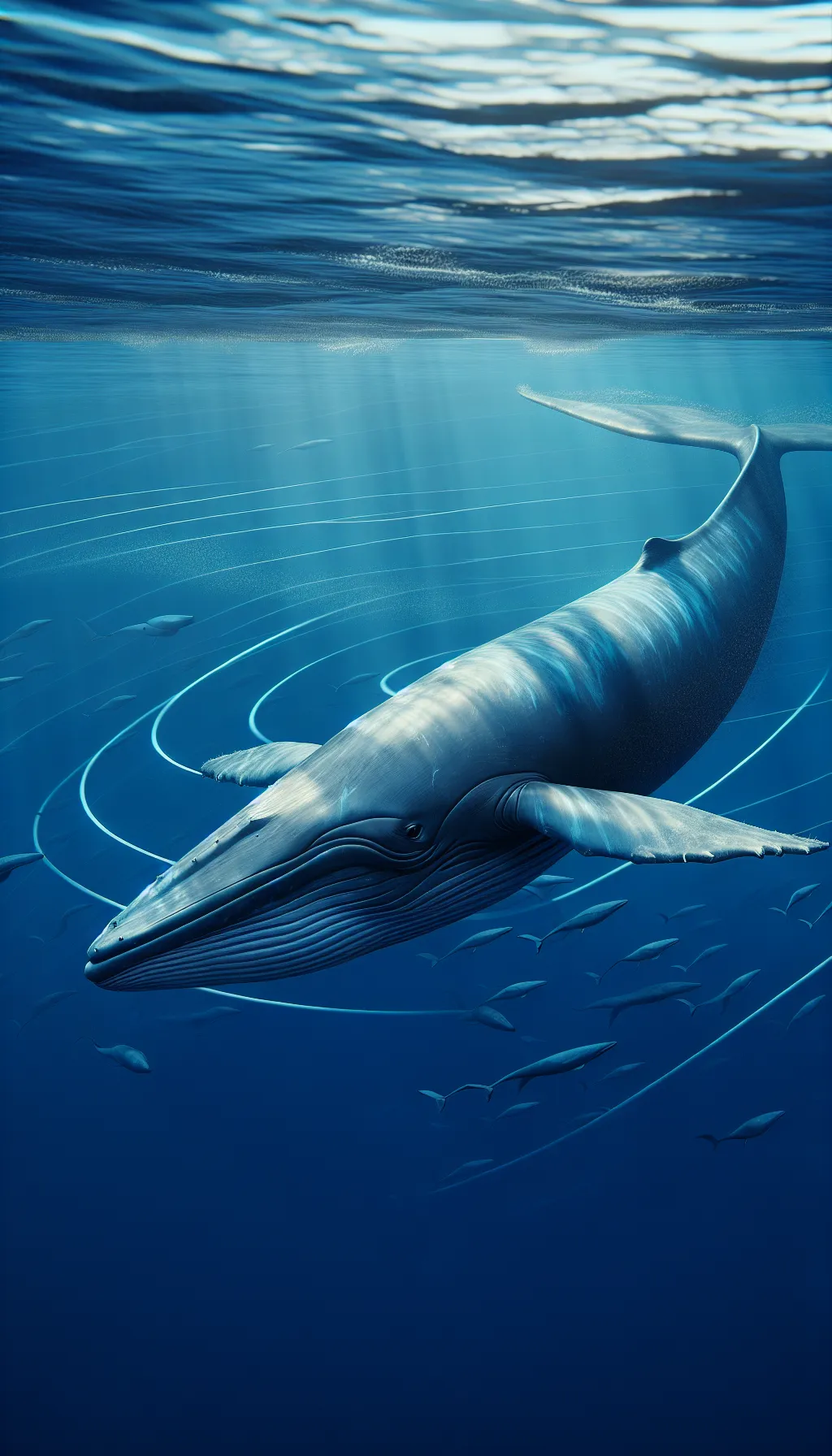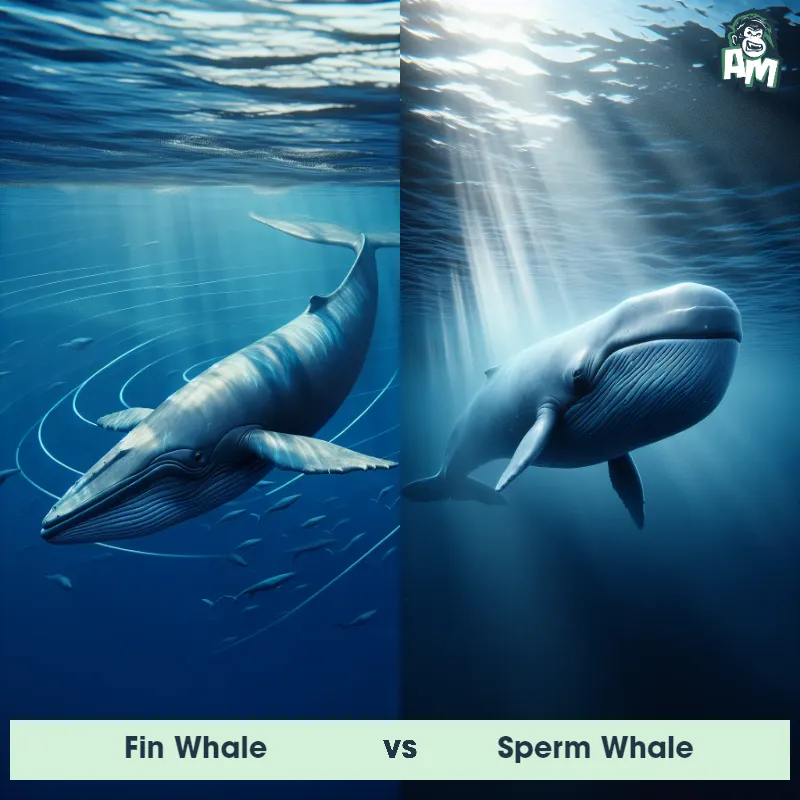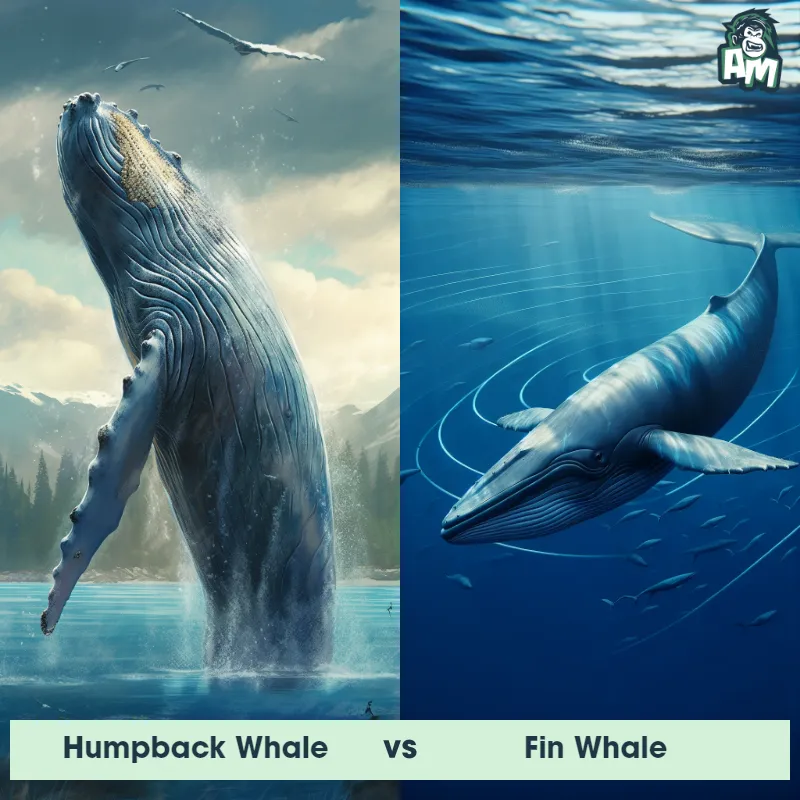The Fin Whale
The Fin Whale, also known as the Balaenoptera physalus, is the second largest animal on Earth, second only to the Blue Whale. It has a streamlined body shape, with a long and slender body that can reach lengths of up to 80 feet and weigh around 70 tons. The most distinctive feature of the Fin Whale is its tall, crescent-shaped dorsal fin located at the center of its back. These whales are known for their powerful swimming abilities and can reach speeds of up to 23 miles per hour. They have a dark gray or blackish color on their back, while their underside is usually a lighter shade.

| Fin Whale | |
|---|---|
| Size | Up to 80 feet (24 meters) |
| Weight | Around 70 tons (63,500 kilograms) |
| Speed | 23mph (37km/h) |
| Key Strength | Powerful tail slaps |
| Biggest Weakness | Vulnerability to ship strikes |
| Scientific Name | Balaenoptera physalus |
| Family | Balaenopteridae |
| Habitat | Open ocean |
| Geography | Worldwide, with a preference for colder waters |
| Diet | Krill, small fish, and squid |
| Lifespan | 80 years - 90 years |

The Fin Whale
The Fin Whale, also known as the Balaenoptera physalus, is the second largest animal on Earth, second only to the Blue Whale. It has a streamlined body shape, with a long and slender body that can reach lengths of up to 80 feet and weigh around 70 tons. The most distinctive feature of the Fin Whale is its tall, crescent-shaped dorsal fin located at the center of its back. These whales are known for their powerful swimming abilities and can reach speeds of up to 23 miles per hour. They have a dark gray or blackish color on their back, while their underside is usually a lighter shade.
Fun Fact: One fascinating fact about the Fin Whale is that it is often referred to as the "greyhound of the sea" due to its incredible speed and agility, despite its massive size.
| Fin Whale | |
|---|---|
| Size | Up to 80 feet (24 meters) |
| Weight | Around 70 tons (63,500 kilograms) |
| Speed | 23mph (37km/h) |
| Key Strength | Powerful tail slaps |
| Biggest Weakness | Vulnerability to ship strikes |
| Scientific Name | Balaenoptera physalus |
| Family | Balaenopteridae |
| Habitat | Open ocean |
| Geography | Worldwide, with a preference for colder waters |
| Diet | Krill, small fish, and squid |
| Lifespan | 80 years - 90 years |
Fin Whale Matchups
We use AI to simulate matchups between the Fin Whale and other animals. Our simulation considers size, strength, and natural predatory behaviors to determine the most likely outcome.

Can't find the Matchup you want?
Create Your Own MatchupFin Whale: Diet, Predators, Aggression, and Defensive Behaviors
What do Fin Whales eat?
Fin Whales primarily feed on small schooling fish, squid, and krill. They are known to be filter feeders, using baleen plates in their mouths to strain food from the water as they swim.
Do Fin Whales have any predators?
As one of the largest animals in the ocean, adult Fin Whales do not have many natural predators. However, young calves may be vulnerable to attacks from killer whales, large sharks, and occasionally, pods of orcas.
Are Fin Whales aggressive?
Fin Whales are generally known to be gentle and non-aggressive animals. They are solitary creatures and are not known to exhibit hostile behavior towards humans or other marine animals.
Do Fin Whales fight?
Fin Whales, like most whales, do not engage in fights with other animals. They may exhibit some forms of social behavior such as breaching, tail slapping, and surface lunging, but these actions are not aggressive in nature.
How do Fin Whales defend themselves?
Fin Whales are known to rely on their sheer size and speed as their primary defense mechanism. They can reach speeds of up to 25 miles per hour, allowing them to outrun predators and avoid potential threats.
What is the Fin Whale's biggest weakness in a fight?
Despite their impressive size and speed, Fin Whales are vulnerable to human activities such as ship strikes, entanglement in fishing gear, and noise pollution. These factors pose a significant threat to their survival and are considered their biggest weaknesses in the face of potential conflicts.
Fun Fact: Unlike most baleen whales, the Fin Whales possess a distinguishing asymmetrical coloration on the lower right side of their jaws, which is known as "right-sided jaw coloration." This unique feature sets them apart from other whale species.
Fun Fact: The vocalizations of Fin Whales can be extremely low-frequency and can travel for hundreds of kilometers through the ocean. These calls, which resemble loud, deep moans, are primarily used for communication and can vary in pitch and tonality.













